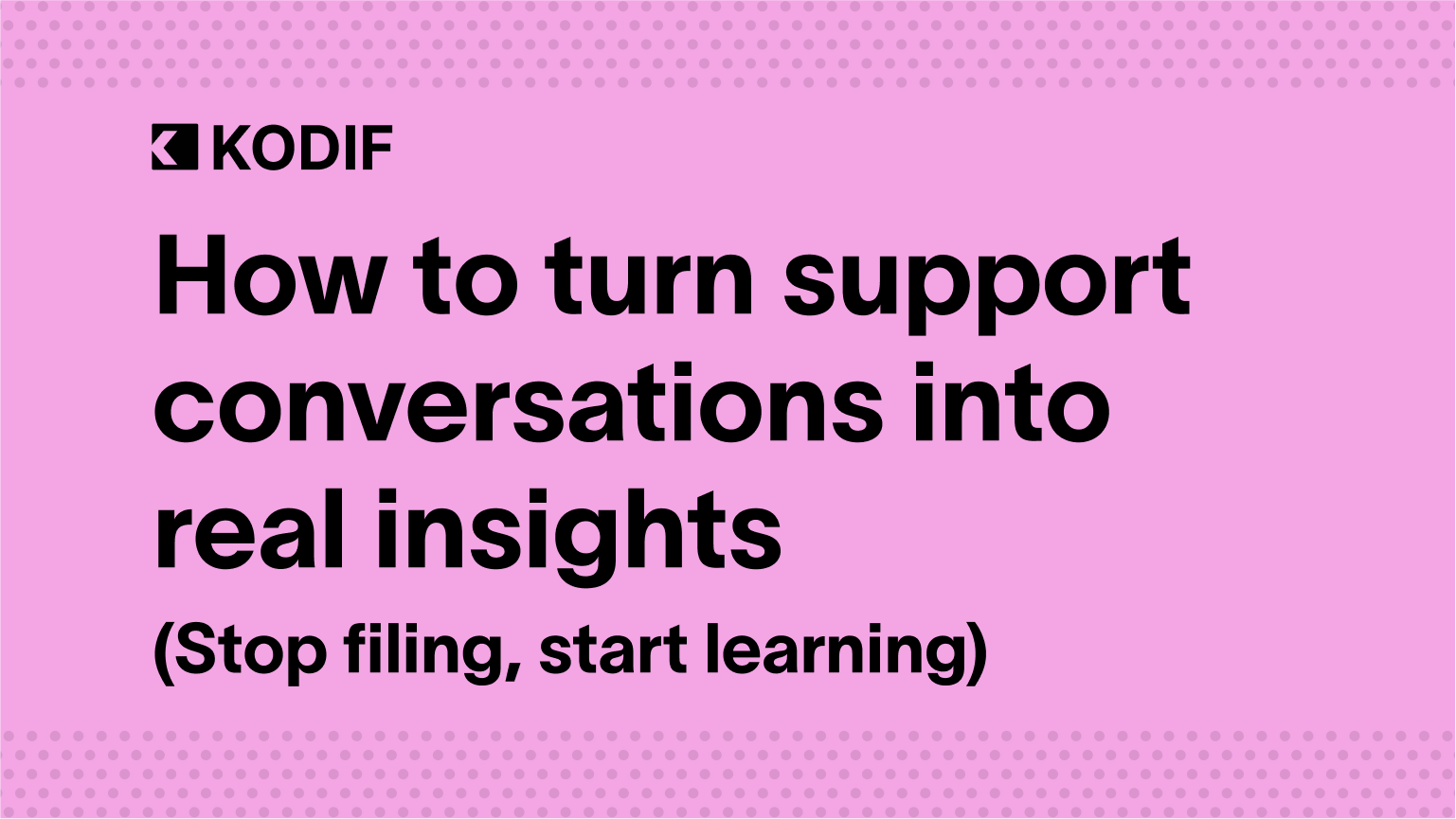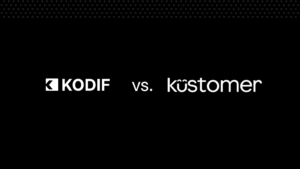Let’s start with the obvious: your customer support inbox is full of all kinds of insights. But a lot of companies don’t treat it that way.
We’re not talking about vague-ish dashboards, or monthly CSAT trends, or endless tag reports.
We’re talking about actual customer insights, the kind that show you what’s working, what’s breaking, and what your customers really care about.
The frustrating part is that most of those insights never leave the help desk queue. Let’s talk about it.
The silent majority of customer insights
Support teams are sitting on thousands of conversations that are all rich with feedback, intent, questions, confusion, praise, and frustration.
And yet most of those conversations get reduced to:
- A tag
- A sentiment label (maybe)
- And a CSAT score
Then they disappear into the archive, never to be read again.
Meanwhile, leadership asks a whole lot of questions, such as:
- “What are our customers telling us?”
- “What’s driving churn?”
- “Why are tickets spiking this month?”
You’ve already got the answers, you just haven’t pulled the insights out of the inbox yet.
What we miss when we oversimplify
If your version of customer insights begins and ends with tagging, here’s what you’re likely missing:
- The context behind repeat contacts
- The tone shifts within a single conversation
- The moments of friction that aren’t categorized anywhere
- The emotional cues that point to lost loyalty or confusion
- The overlap between CX, product gaps, and messaging problems
You can’t find that in a dropdown. You have to look at the conversation as a whole and extract meaning from it.
The support team sees it first
Most genuine customer insights show up in support before they show up anywhere else.
Before churn, before social complaints, before NPS tanks or a feature request gains traction.
Support is where customers speak unfiltered. They don’t tailor their tone for stakeholders. They just want help, and their questions, frustrations, and language tell you exactly what’s going on.
But if all of that ends up as “Order Issue / Negative Sentiment / Resolved,” you’re not building a better support org, you’re continuing to build a blind spot.
What customer insights actually look like
Real customer insights aren’t just more metrics on top of the ones you already have, they’re stories you can think about and act on.
Here are some examples:
- “A third of refund requests this month mentioned misleading sizing guidance.”
- “Cancellations spike in week 6 of the subscription unless there’s been a support touchpoint before that.”
- “Sentiment drops 20% when orders arrive late and the response doesn’t acknowledge it.”
- “People keep asking the bot the same five pre-sale questions, which means they’re not answered clearly on the site.”
Insights like this let you fix problems, not just measure them.
The problem with manual tagging
Even well-intentioned support teams struggle to generate useful insights from tagging alone.
Tags are often:
- Inconsistently applied
- Outdated or too broad
- Unable to capture nuance or emotion
- Detached from customer history or outcomes
And even when tagging is accurate, it doesn’t explain:
- Why the customer reached out
- How the experience unfolded
- What they’re likely to do next
That’s not just a data issue. It’s a missed opportunity to improve both your support workflows and your broader customer experience strategy.
How to get better customer insights from support (right now)
Whether you’re using advanced tools or just starting to dig deeper, here are a few ways to make your support team a real driver of customer insights:
1. Start with better questions
Don’t start with “What’s our CSAT?” Start with “Why are customers contacting us twice in one week?” or “What kinds of questions signal potential churn?”
2. Review conversations regularly
Sample actual threads weekly. Not just escalations, either—look at resolved cases, frustrating exchanges, and anything emotionally charged.
3. Map insights to action
A good insight is one that can drive a change in how you communicate, design, support, or automate. And, don’t forget that that change needs to be tracked, assigned, and potentially even followed up on with the customer.
4. Look at tone and effort, not just outcome
A “resolved” ticket is a nuanced term. Just because the ticket got closed with some level of answer doesn’t mean the experience was easy. Look for friction, tone shifts, or signs of relief or exasperation.
5. Share what you find
Support should be part of product and marketing’s feedback loop. The more they know about what customers are saying, the better they can build and communicate.
The role of AI in unlocking support insights
This is one of the few places where AI can genuinely deliver on its promises.
Not by summarizing conversations, or by writing scripts, but by helping teams sift through thousands of real interactions and surface patterns, gaps, and recurring frustrations—automatically.
AI-powered analysis can give you insight into:
- Which flows are working (and which aren’t)
- How policies are affecting sentiment
- Where customers are getting stuck
- Which intents signal churn or opportunity
You’re not replacing people, you’re amplifying what they’d see if they had time to read every thread.
Customer insights don’t live in your dashboard
They live in your DMs, your chat logs, your email chains.
They show up in the way a customer explains a delay, the language they use when describing a product, the tone of voice that signals satisfaction—or disappointment—even when the outcome is technically “resolved.”
Support isn’t just a team that handles problems, it’s the part of your business that gets the clearest, most unfiltered view into your customer relationships.
TL;DR: are you really listening?
Support is where customer insights are born. Start treating it like the data source it actually is.
- Read between the lines of your conversations
- Track tone, not just tags
- Use those signals to drive real change
Because the best businesses don’t just support their customers, they learn from them.









